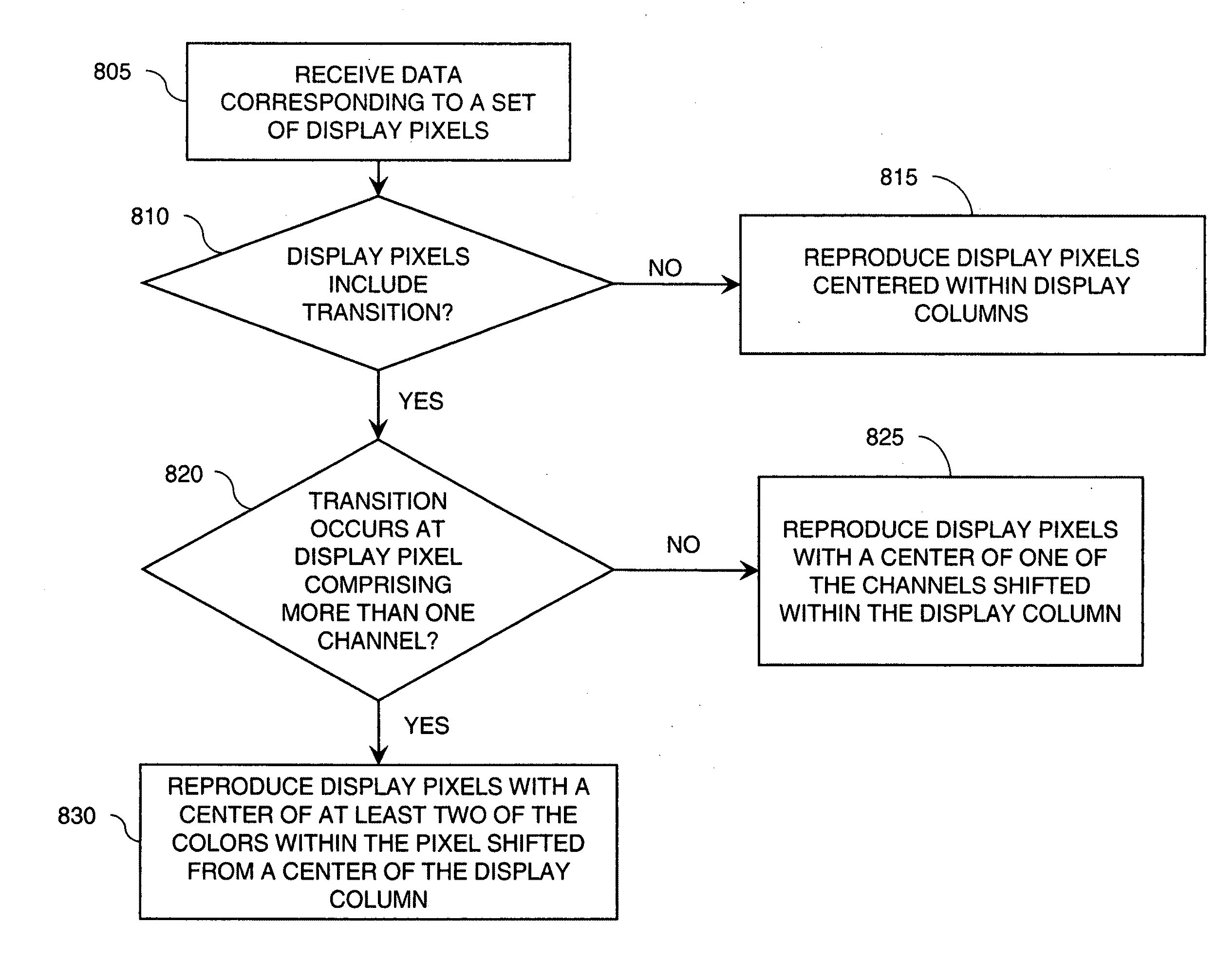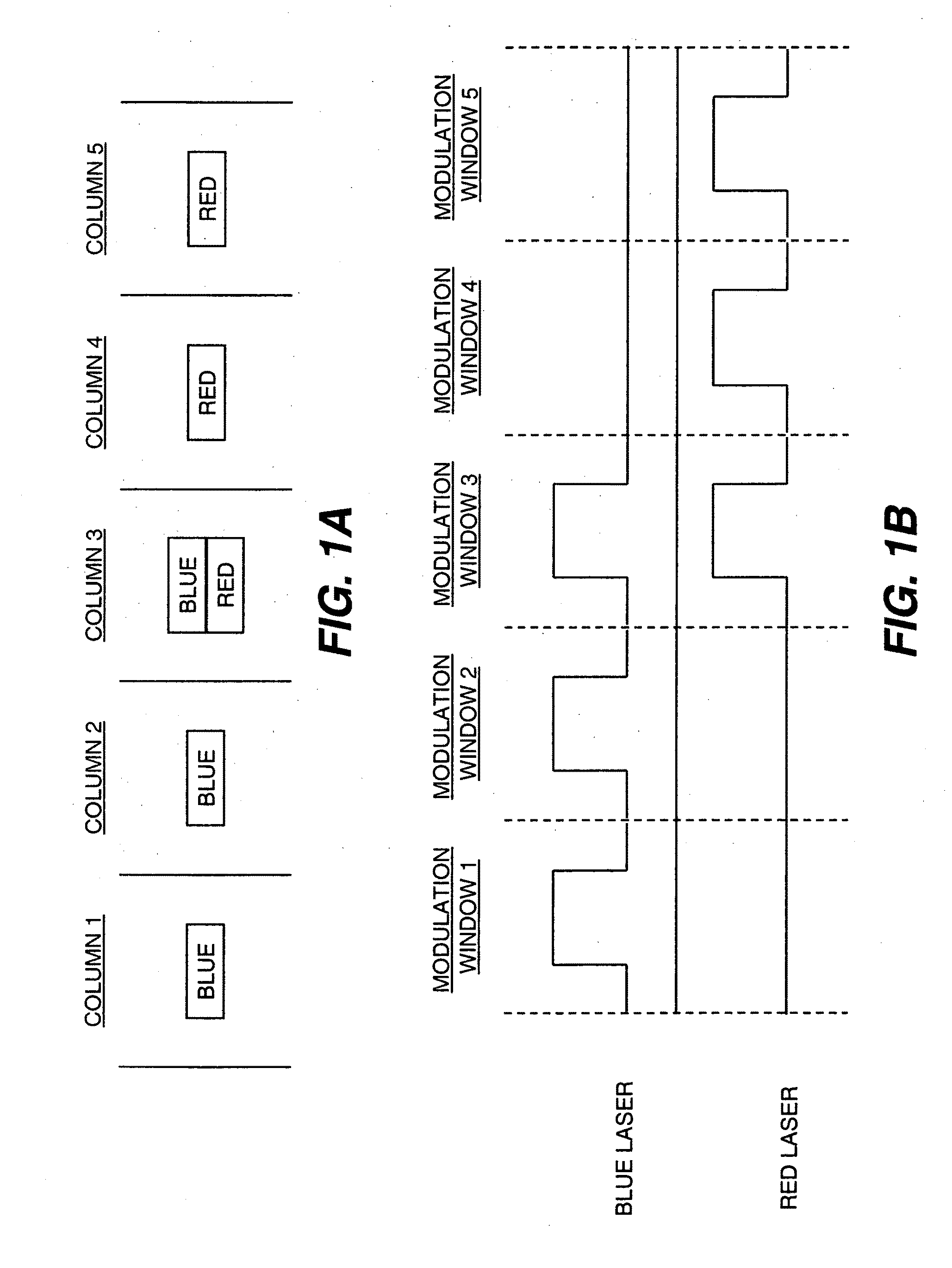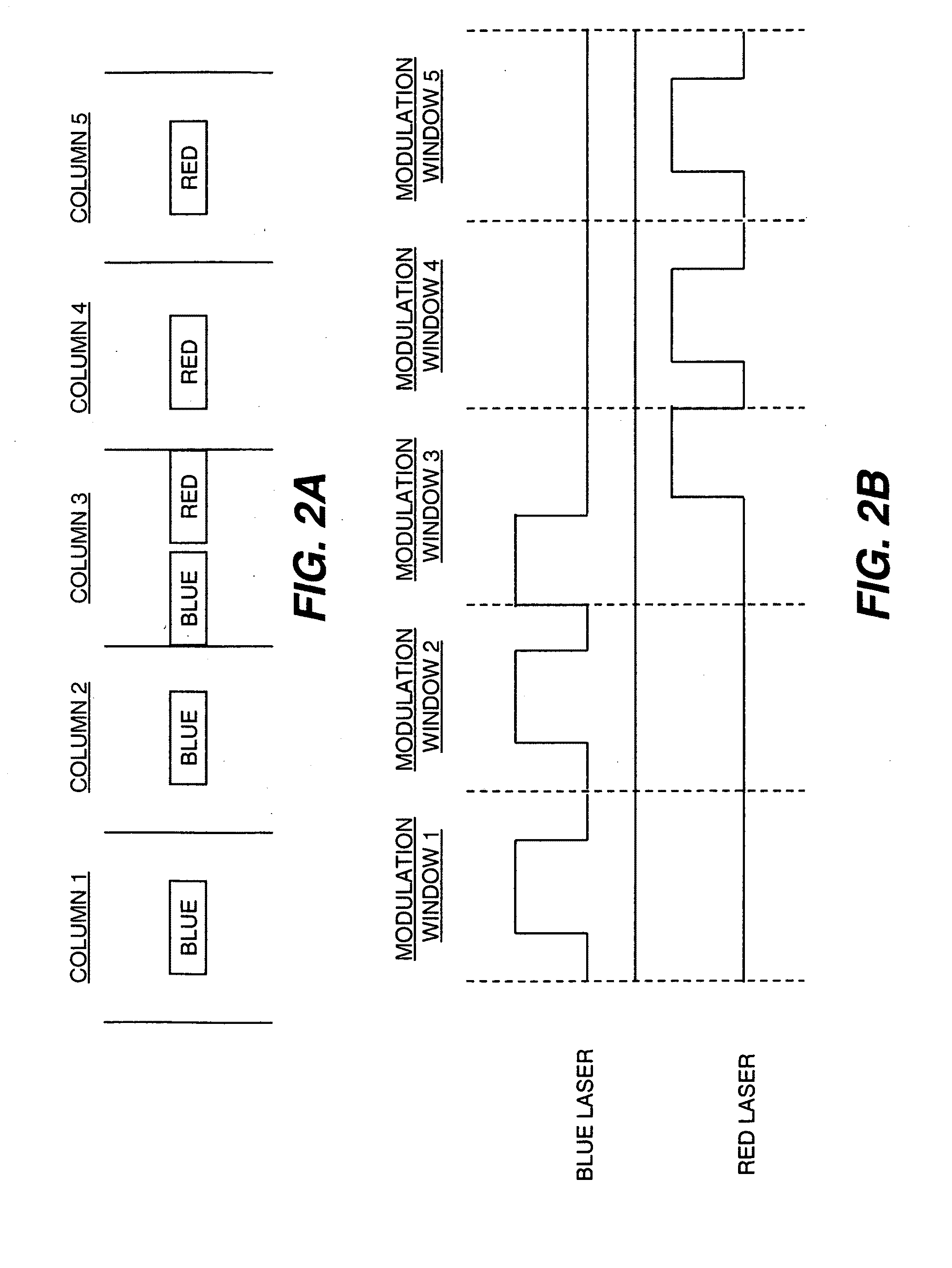Edge reproduction in optical scanning displays
- Summary
- Abstract
- Description
- Claims
- Application Information
AI Technical Summary
Benefits of technology
Problems solved by technology
Method used
Image
Examples
Embodiment Construction
[0027]FIGS. 2A-5B illustrate exemplary spatial manipulation of pixels in accordance with embodiments of the present invention. These figures assume that the input image data is the same that is used in FIGS. 1A and 1B. A detector is used to determine a transition exceeding some predefined threshold such as that described by William K. Pratt in Digital Image Processing, pp. 491-556. The detector may be implemented in hardware or software. As illustrated in FIG. 2A, the center of the blue pixel in the third display column can be shifted to the left and the center of the red pixel in the third display column can be shifted to the right. Thus, as illustrated in FIG. 2B, this is achieved by shifting the center of the pulse that directs the modulated blue laser light towards the preceding modulation window and shifting the center of the pulse that directs the modulated red laser light towards the subsequent modulation window. Although exemplary embodiments are disclosed in connection with...
PUM
 Login to View More
Login to View More Abstract
Description
Claims
Application Information
 Login to View More
Login to View More - R&D
- Intellectual Property
- Life Sciences
- Materials
- Tech Scout
- Unparalleled Data Quality
- Higher Quality Content
- 60% Fewer Hallucinations
Browse by: Latest US Patents, China's latest patents, Technical Efficacy Thesaurus, Application Domain, Technology Topic, Popular Technical Reports.
© 2025 PatSnap. All rights reserved.Legal|Privacy policy|Modern Slavery Act Transparency Statement|Sitemap|About US| Contact US: help@patsnap.com



